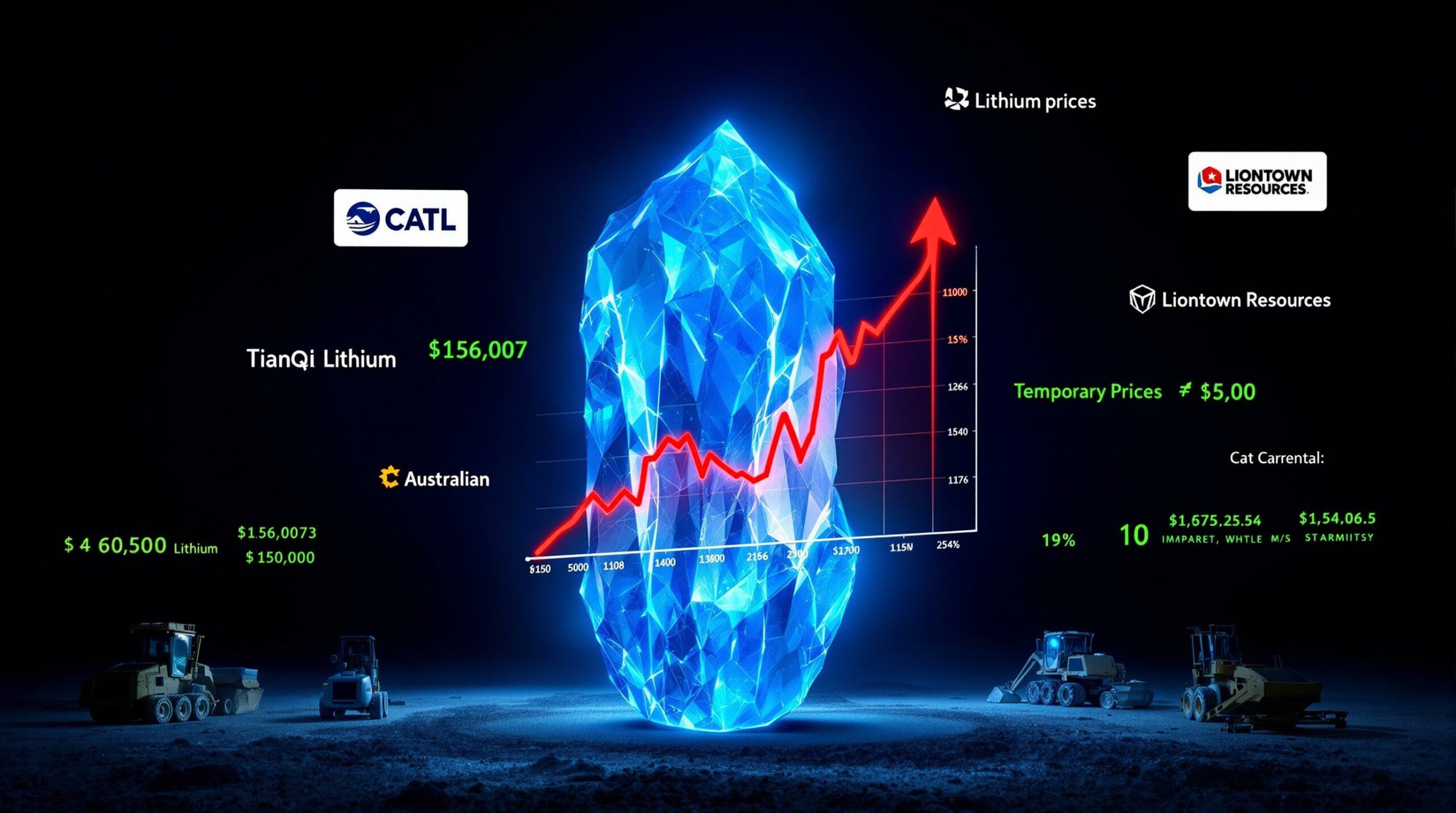What Makes Tanami's New Mine Shaft a Groundbreaking Safety Innovation?
Australia's mining industry is witnessing a revolutionary advancement in safety technology with Newmont's construction of a 1.5-kilometer mine shaft at the Tanami gold mine in the Northern Territory. This engineering marvel, set to become Australia's deepest mine shaft upon completion in late 2026, promises to transform both production capabilities and safety protocols in underground mining operations.
The shaft's development represents a significant milestone in Australia's mining sector, combining cutting-edge engineering with practical safety solutions to address long-standing challenges in underground operations.
The Record-Breaking Shaft: Technical Specifications
The new shaft extends an impressive 1.5 kilometers below the surface, surpassing all existing mine shafts in Australia. This remarkable depth allows access to high-grade gold deposits previously difficult to reach efficiently and safely.
Equipped with a state-of-the-art mechanized underground crushing system, the shaft can hoist up to 28 tonnes of ore per skip to the surface. This system operates with unprecedented efficiency—completing in just 2.5 minutes what currently takes trucks approximately 3 hours to accomplish through winding underground tunnels.
"The engineering challenges at this depth are considerable," explains Grant Brinkman, Senior Construction Manager at Tanami. "We're implementing specialized rock support systems and advanced ventilation technology to ensure safety at these extreme depths."
Current Safety Challenges in Underground Mining
The Tanami operation currently faces several critical safety concerns that the new shaft directly addresses:
- Limited visibility in truck operations with significant blind spots in narrow tunnels
- Driver fatigue during extended 3-hour round-trip hauls through dark, confined spaces
- High congestion in underground pathways increasing collision risks between vehicles
- Mental alertness challenges for operators working in confined, low-light environments
- Approximately 3,000 radio calls daily requiring manual logging by staff
Suzanne Burke, Underground Haulage Supervisor at Tanami, highlights a key safety issue: "The majority of the trucks have blind spots. So your focus is in front, at the windscreen, at one little side mirror, and then your reversing camera, and that is all that you can see."
How Will the New Shaft Transform Underground Safety?
The shaft's implementation will fundamentally alter how workers and materials move through the mine, creating a safer environment through several key mechanisms.
Reducing Vehicle Interactions and Traffic Congestion
One of the most significant safety improvements comes from dramatically decreasing the number of trucks needed for ore transportation. Industry experts estimate a 40-60% reduction in underground vehicle traffic once the shaft is operational.
Burke explains that vehicle interactions represent one of the highest risks in underground mining: "When two vehicles need to pass in restricted tunnels, that's when incidents are most likely to occur. The new shaft system will significantly reduce these dangerous interactions."
By alleviating tunnel congestion, the shaft creates clearer pathways for essential vehicles and personnel, reducing the probability of collisions in the tight underground network.
Enhancing Operational Efficiency and Reducing Fatigue
The efficiency gain from three-hour truck trips to 2.5-minute hoist operations directly impacts operator fatigue—a critical safety factor in mining accidents.
Brinkman elaborates: "The trucks take about a three-hour return trip to drive underground, pick up a load of rock, and come back. This shaft system can hoist the equivalent amount of rock in about two and half minutes."
Studies from similar mining operations have shown that reducing operator driving time by 50% can decrease fatigue-related incidents by up to 40%. The near-elimination of long hauls at Tanami is expected to produce even more dramatic improvements.
This efficiency allows workers to maintain higher levels of alertness and focus on safety-critical tasks rather than enduring long, monotonous drives through poorly lit tunnels.
What Technological Innovations Complement the New Shaft?
The shaft implementation is part of a broader technological transformation at the Tanami operation, integrating several cutting-edge systems to enhance safety.
Integration of Automated Fleet Management
Alongside the new shaft, Newmont is implementing Caterpillar's MineStar system—an advanced automated fleet management technology that enhances operational oversight and safety monitoring. This sophisticated system streamlines the approximately 3,000 daily radio calls that currently require manual logging.
"MineStar will reduce the cognitive load on our staff," notes Rachelle Pattermore, a mining technology specialist. "Instead of manually tracking vehicle locations and movements, the system provides real-time monitoring with automated alerts for potential hazards or congestion points."
The system's predictive analytics can identify patterns that might lead to safety incidents before they occur, allowing for preventative measures rather than reactive responses.
Creating a Pathway to Mine Automation
The shaft represents a crucial step in Newmont's broader strategy to incorporate various degrees of autonomy into mining operations. This transition toward mining automation technologies aims to remove workers from high-risk environments while maintaining or improving productivity.
Unlike traditional mines where automation requires extensive retrofitting, the new shaft is being designed with automation in mind from the outset. This forward-thinking approach includes:
- Integrated sensors throughout the shaft system to monitor structural integrity
- Automated skip loading and unloading systems to reduce human intervention
- Real-time environmental monitoring for gas levels, temperature, and ground movement
- Digital twin technology creating a virtual model of the entire shaft system for remote monitoring
Industry analysts suggest that purpose-built automated systems can achieve safety improvements of 80% or more compared to retrofitted solutions.
What Are the Expected Outcomes for Worker Safety?
The combination of the new shaft system and complementary technologies is expected to yield significant improvements in safety metrics and worker wellbeing.
Improving Mental Health and Cognitive Performance
The new shaft system will have profound effects on the psychological wellbeing of Tanami's fly-in, fly-out (FIFO) workforce. By reducing the cognitive load on operators and creating more predictable work environments, the system addresses key stressors identified in mining mental health research.
Studies from comparable operations show that removing unpredictable elements like traffic congestion and prolonged isolation in vehicles can reduce workplace stress by up to 30% among underground operators.
For FIFO workers who already face challenges with isolation and separation from support networks, these improvements in daily working conditions can significantly impact overall mental health outcomes.
Establishing New Safety Benchmarks for the Industry
When operational in late 2026, the Tanami shaft will likely establish new safety benchmarks for deep underground mining operations across Australia and potentially worldwide.
Industry experts predict several measurable safety improvements:
- Reduction in vehicle interaction incidents by more than 60%
- Decrease in fatigue-related safety incidents by approximately 75%
- Improved emergency response times through reduced congestion
- Enhanced evacuation capabilities through dedicated personnel hoisting systems
These improvements align with the mining sector's ongoing commitment to "zero harm" workplace initiatives, demonstrating how digital transformation in mining and substantial infrastructure investment can drive meaningful safety outcomes.
The Tanami project represents a major advancement in the future of underground mining, showing how deep mining operations can be conducted safely while maintaining high productivity. According to a recent report by ABC News, the project is moving forward amid record gold prices, providing strong economic incentives for these safety innovations.
FAQ: Australia's Deepest Mine Shaft
How deep is the new mine shaft at Newmont's Tanami operation?
The new shaft extends 1.5 kilometers below the surface, making it the deepest mine shaft in Australia once completed. For context, this is approximately the height of 5 Sydney Harbour Bridges stacked on top of each other.
When will the new shaft be fully operational?
The shaft is expected to be fully operational by the end of 2026, following an extensive construction and commissioning process.
How much will gold production increase with the new shaft?
The new shaft is anticipated to almost double gold production at the Tanami mine, with estimates suggesting an increase from 1.2 million ounces to approximately 2.3 million ounces annually.
What safety improvements will the shaft bring to underground operations?
The shaft will reduce underground traffic congestion by 40-60%, minimize blind spot hazards through fewer vehicle interactions, decrease operator fatigue by eliminating 3-hour haulage trips, and create pathways for further automation of mining processes.
How does the MineStar system complement the new shaft?
MineStar provides automated fleet management capabilities that reduce the need for manual communication and logging. This allows staff to focus on safety improvements rather than routine reporting tasks, while the system's analytics identify potential hazards before they result in incidents.
As detailed in Newmont's official mining process documentation, these technologies represent the cutting edge of how modern mining operations are evolving to prioritize both safety and efficiency.
Want to Capitalise on the Next Major Mineral Discovery?
Stay ahead of the market with Discovery Alert's real-time notifications on significant ASX mining discoveries, powered by our proprietary Discovery IQ model. Discover why major mineral finds like those from De Grey Mining can lead to exceptional returns by exploring our dedicated discoveries page.




